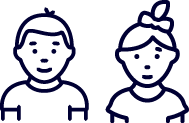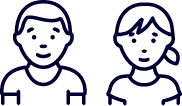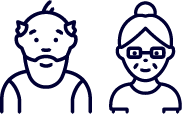Sport Australia is committed to helping sport organisations deliver services that align to the needs of current and future participants. By building a strong knowledge base about their target audience, sports can design products and experiences that attract and retain more participants.
A life stage approach
As we travel through life, our circumstances change and so do our physical activity habits.
Exploring each life stage in detail allows organisations to understand the physical activity levels and behaviours of each age group and target participation offerings accordingly. It’s also important to understand that sports and clubs don’t need to have an offer for every age group. It's often more effective to target life stages or market segments when launching a new product or modifying an existing participation experience.
Understanding physical activity levels
Australia's physical activity and 24-hour movement guidelines tell us how active people should be at different life stages in order to enjoy good physical and mental health. Data from AusPlay 2019 shows us that:
- most Australians are not meeting the physical activity guidelines for their age
- teenagers are the least likely to reach their required 60 minutes of moderate intensity physical activity each day
- after the teenage years, the proportion of people meeting physical activity guidelines gradually increases up to 65 years of age.
With millions of insufficiently active Australians at all life stages, sports have an opportunity to help people find and continue to participate in a sport they enjoy.
This part of the toolkit offers participant insights about each life stage and activity level as shown in the graph below. Click on the relevant life stage tile above to learn more.
Chart Legend
Active
Insufficiently active
Inactive




